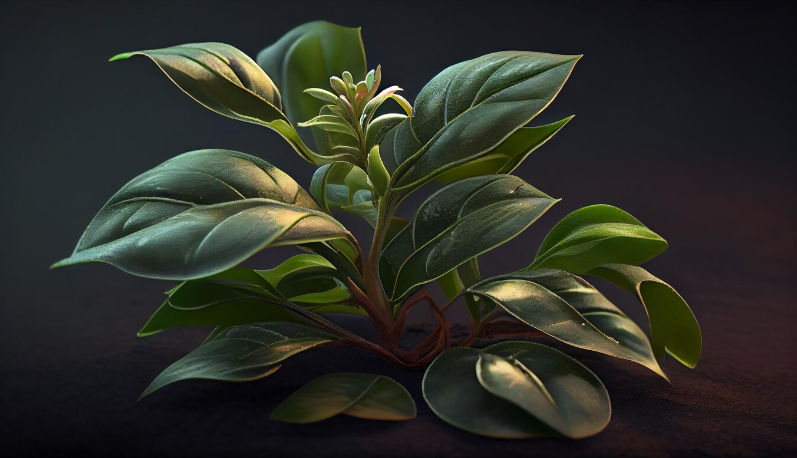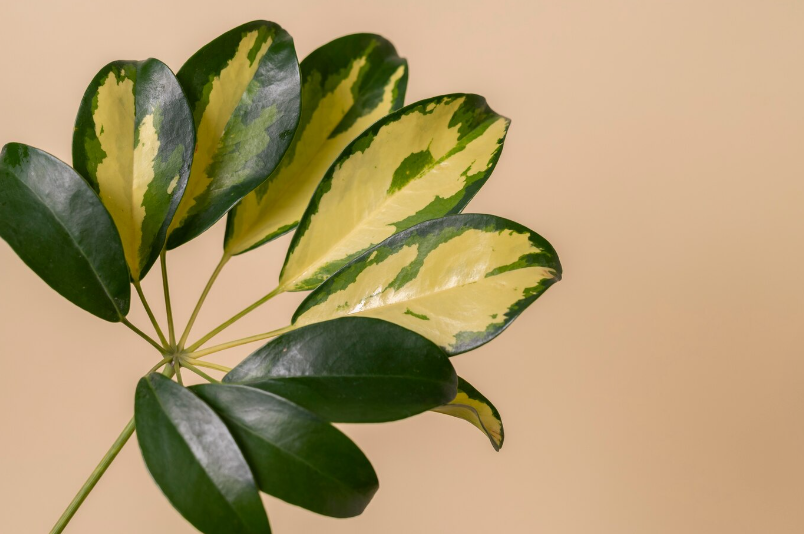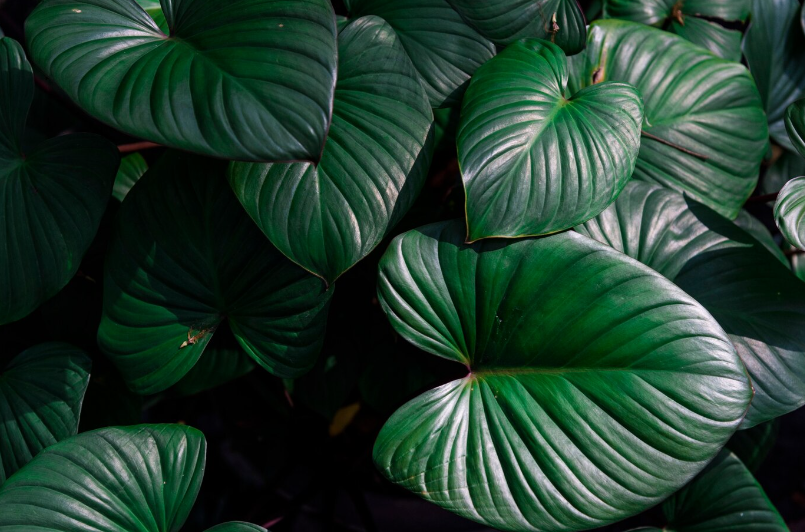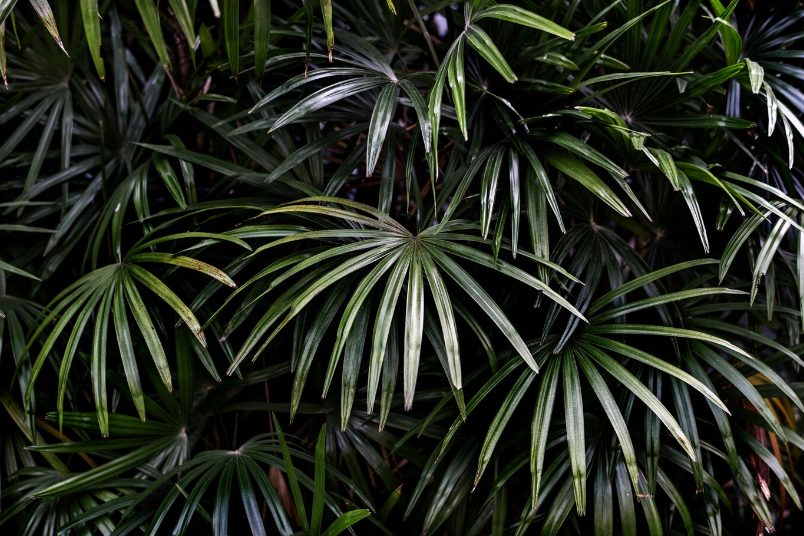Effective Watering Techniques for Pink Princess Philodendron

If you are a proud owner of a Pink Princess Philodendron, you know how important it is to provide the right amount of water for this gorgeous plant. Proper watering is crucial for the health and vitality of your Pink Princess Philodendron, as it helps to prevent both under- and over-watering, which can lead to leaf yellowing and root rot.
One of the most effective watering techniques for Pink Princess Philodendron is to use the “soak and dry” method. This method involves thoroughly watering the plant until water drains out from the bottom of the pot. Wait until the top inch of soil is completely dry before watering again. This allows the roots to absorb water properly, while also ensuring that the roots do not sit in water for extended periods, which can lead to root rot.
Another important aspect of watering your Pink Princess Philodendron is to pay attention to the water quality. This plant prefers slightly acidic water with a pH level between 5.5 and 6.5. If your tap water is not within this range, you can use rainwater or filtered water instead. Avoid using water that has been treated with water softeners, as the high salt content can be harmful to the plant.
In addition to the “soak and dry” method and using the right water quality, it is essential to consider the temperature and humidity levels when watering your Pink Princess Philodendron. This plant thrives in moderate to high humidity levels, so misting the leaves or using a humidifier can help create the ideal environment. Additionally, avoid placing your Pink Princess Philodendron near drafts or vents, as these can cause the soil to dry out too quickly.
By following these effective watering techniques, you can ensure the health and beauty of your Pink Princess Philodendron, making it a stunning addition to your indoor or outdoor space.
Basics of Watering Pink Princess Philodendron
Proper watering techniques are essential to the health and well-being of your Pink Princess Philodendron. To ensure your plant thrives, it’s important to understand the basics of watering and how to meet the specific needs of this particular plant variety.
Frequency of Watering
The frequency of watering will depend on various factors such as temperature, humidity, and the size of the plant. In general, Pink Princess Philodendrons prefer slightly moist soil, but it’s important not to overwater, as this can lead to root rot.
Allow the top inch of soil to dry out before watering again. This can be determined by sticking your finger into the soil or by using a moisture meter. Avoid letting the soil become completely dry, as this can cause stress to the plant.
Watering Techniques
When watering your Pink Princess Philodendron, it’s important to water the soil rather than the leaves. This helps prevent fungal diseases and keeps the leaves dry, which reduces the risk of bacterial infection.
Use room temperature water to avoid shocking the plant’s roots, as cold water can cause stress. Slowly pour water onto the soil until it starts to come out of the drainage holes at the bottom of the pot. Ensure that all parts of the soil are evenly moistened, but avoid leaving the plant sitting in standing water.
Humidity Considerations
Pink Princess Philodendrons prefer higher levels of humidity, similar to their tropical habitat. To increase humidity, you can use a humidifier, place the plant on a tray with water and pebbles, or mist the leaves regularly with a spray bottle.
Monitoring the humidity levels in your home and adjusting accordingly can help prevent issues such as leaf browning or wilting.
By following these basic watering techniques and paying attention to the specific needs of your Pink Princess Philodendron, you can ensure that your plant stays healthy and vibrant.
The Best Methods for Watering Pink Princess Philodendron
Proper watering is essential for the health and growth of your Pink Princess Philodendron. Follow these tips to ensure you are using the best methods for watering:
1. Soil moisture:
Check the moisture level of the soil before watering. Stick your finger about an inch into the soil; if it feels dry, it’s time to water. If it’s still moist, you can wait a few more days before watering.
2. Water quality:
Use filtered or distilled water when possible. Tap water can contain chemicals like chlorine and fluoride, which may harm the plant over time. Avoid using water that has passed through a water softener, as it can be high in salt.
3. Watering frequency:
Philodendrons prefer slightly moist soil, but they don’t like to sit in water for extended periods. Water thoroughly when the soil is dry to the touch, but don’t leave your plant in standing water. Aim for a watering routine of once every 7-10 days, adjusting based on the moisture level of the soil.
4. Watering method:
Bottom watering is often recommended for Pink Princess Philodendron. Fill a tray or saucer with water and place the plant’s pot on top. This allows the roots to soak up water from the bottom, preventing overwatering and minimizing the risk of root rot. After about 30 minutes, remove any excess water that hasn’t been absorbed.
5. Temperature and humidity:
Pink Princess Philodendrons prefer warm and humid conditions. Monitor the temperature and humidity levels in your home to ensure they are within the plant’s preferred range. Higher humidity levels can slow down the soil’s drying process, affecting the watering frequency.
By following these watering methods, you can provide the optimal conditions for your Pink Princess Philodendron, promoting healthy growth and vibrant foliage.
Watering Needs of Philodendrons
Philodendrons are tropical houseplants that require specific watering routines to thrive. Proper watering is essential for the health and longevity of your pink princess philodendron. Here are some tips to help you understand the watering needs of philodendrons:
1. Consistency is Key
Philodendrons prefer consistently moist soil, but not waterlogged. It’s essential to water your pink princess philodendron on a regular schedule rather than waiting for the soil to completely dry out. Check the soil moisture level by sticking your finger about an inch into the soil. If it feels dry, it’s time to water.
2. Watering Methods
When watering your pink princess philodendron, it’s best to use the bottom-up method. Fill a saucer or tray with water and place the plant’s pot on top. Allow the plant to soak up the water through the drainage holes for about 15-20 minutes, then discard any excess water. This method ensures that the roots receive adequate moisture without causing waterlogging.
3. Avoid Overwatering
Overwatering can lead to root rot and other fungal diseases. It’s crucial to avoid keeping the soil constantly wet or waterlogged. Make sure to provide proper drainage by using a well-draining potting mix and a container with drainage holes. If you notice yellowing leaves or a foul smell, it’s a sign of overwatering. Adjust your watering schedule accordingly.
4. Adjusting Watering Frequency
Philodendrons may require more frequent watering during the warmer months when the evaporation rate is higher. Monitor the soil moisture level regularly and adjust your watering schedule as needed. It’s better to underwater slightly than to overwater.
5. Humidity Levels
Philodendrons prefer higher humidity levels, so it’s beneficial to provide some humidity for your pink princess philodendron. You can mist the leaves occasionally or place a tray of water near the plant to increase humidity. However, avoid misting too frequently as it can promote fungal growth.
By following these watering guidelines, you can ensure that your pink princess philodendron stays healthy and beautiful. Remember, every plant is unique, so it’s essential to observe your plant’s specific watering needs and adjust accordingly. Happy watering!
Top vs. Bottom Watering: Which is Best for Pink Princess?
When it comes to watering your Pink Princess Philodendron, you may be wondering whether top watering or bottom watering is the best method. Both techniques have their advantages and disadvantages, so it’s important to consider your specific plant and environment before deciding which one to use.
Top watering:
- Top watering involves pouring water directly onto the soil surface until it drains out through the drainage holes at the bottom of the pot.
- This method allows for greater control over the amount of water your Pink Princess receives, ensuring that it doesn’t get overwatered.
- However, top watering can wash away nutrients from the soil and may result in uneven watering if not done carefully.
- It is recommended to use room temperature water to avoid shocking the plant’s roots.
Bottom watering:
- Bottom watering involves placing your Pink Princess pot in a tray or saucer filled with water and allowing the plant to soak up the water through the drainage holes.
- This method helps promote deep root growth and prevents water from sitting on the leaves, which can lead to fungal diseases.
- However, bottom watering can make it difficult to gauge how much water your plant is receiving and may lead to overwatering if not monitored closely.
- It is important to ensure that the pot is not left sitting in water for an extended period of time, as this can lead to root rot.
In conclusion, both top and bottom watering can be effective methods for watering your Pink Princess Philodendron. The best approach will depend on your preferences, the specific needs of your plant, and your watering routine. Remember to monitor the soil moisture and adjust your watering technique accordingly to keep your Pink Princess healthy and thriving.
Enhancing Growth and Color
To enhance the growth and color of your Pink Princess Philodendron, it is important to provide the plant with the right environmental conditions and care. Here are some tips to help you achieve optimal growth and vibrant color:
1. Light: Pink Princess Philodendrons thrive in bright, indirect light. Place your plant near a window where it can receive filtered sunlight. Avoid placing it in direct sunlight as this can scorch the leaves.
2. Temperature: These plants prefer temperatures between 65°F (18°C) and 85°F (29°C). Keep the plant away from drafts or drastic temperature changes as this can cause stress and affect its growth.
3. Humidity: Pink Princess Philodendrons prefer high humidity levels. Increase the humidity around the plant by placing it on a humidity tray filled with water or by using a humidifier. Misting the leaves regularly can also help maintain humidity.
4. Watering: Proper watering is crucial for the growth and color of your Pink Princess Philodendron. Water the plant thoroughly once the top inch of soil feels dry. Ensure that the pot has drainage holes to prevent waterlogging, which can lead to root rot.
5. Fertilization: Regular fertilization can help promote growth and enhance the color of your plant. Use a balanced, water-soluble fertilizer once a month during the growing season. Follow the package instructions for the correct dosage.
6. Pruning: Pruning is essential for maintaining the shape and promoting new growth. Remove any damaged or dead leaves, and trim back leggy stems to encourage bushier growth. Additionally, periodic grooming can help maintain the plant’s appearance.
By following these tips, you can ensure that your Pink Princess Philodendron stays healthy and vibrant, displaying its stunning colors and thriving in its environment.
Tips to Encourage Healthy Growth in Pink Princess Philodendron
Proper care and maintenance are crucial to ensuring the healthy growth of your Pink Princess Philodendron. Here are some tips to help you keep your plant in tip-top shape:
1. Adequate Lighting: Place your Pink Princess Philodendron in a location where it can receive bright, indirect light. Avoid direct sunlight, as it can scorch the leaves. If you notice that the leaves are turning pale or yellow, it may be a sign that the plant is not getting enough light.
2. Optimal Temperature and Humidity: Pink Princess Philodendrons thrive in a warm and humid environment. Keep the temperature between 65°F and 75°F (18°C-24°C) and humidity levels around 50-60%. If the air in your home tends to be dry, consider using a humidifier or placing a tray of water near the plant to increase humidity.
3. Regular Watering: Water your Pink Princess Philodendron when the top inch of soil feels dry to the touch. Ensure that the water drains out of the bottom of the pot to prevent waterlogging, as this can lead to root rot. Avoid overwatering, as it can cause the plant’s leaves to yellow and droop.
4. Fertilization: Feed your Pink Princess Philodendron with a balanced, water-soluble fertilizer once a month during the growing season (spring and summer). Follow the manufacturer’s instructions for dosage and application. Be cautious not to over-fertilize, as it can lead to nutrient burn and damage the roots.
5. Pruning: Remove any dead or yellow leaves regularly to maintain the plant’s overall health. Additionally, pruning can help shape the plant and encourage new growth. Use clean, sharp pruning shears and make clean cuts just above a leaf node.
6. Provide Support: As your Pink Princess Philodendron grows, you may need to provide support for its climbing vines. Use a stake or moss pole for the plant to cling onto and grow vertically. This will help keep the plant upright and prevent it from sprawling or becoming leggy.
7. Monitor for Pests: Regularly inspect your Pink Princess Philodendron for any signs of pests, such as spider mites or mealybugs. If you notice any pests, take immediate action to treat the infestation to prevent damage to the plant. A mild soap and water solution or neem oil spray can be effective in controlling pests.
By following these tips, you can create a favorable environment for your Pink Princess Philodendron to thrive and enjoy healthy growth. Remember to observe your plant closely and adjust your care routine as needed to meet its specific needs.
Strategies for Increasing the Pink Variegation in Leaves
One of the most desirable features of the Pink Princess Philodendron is its vibrant pink variegation in its leaves. However, the intensity of the pink color can vary and fade over time. To enhance and maintain the pink variegation in leaves, consider implementing the following strategies:
| Strategy | Description |
|---|---|
| 1. Provide Adequate Light | Place your Pink Princess Philodendron in a location with bright, indirect light. Adequate light exposure helps the plant produce and retain its pink variegation. |
| 2. Adjust Temperature and Humidity | Maintain a temperature range of 65-85°F (18-29°C) and humidity levels between 40-60%. These conditions mimic the plant’s natural habitat and promote healthy growth, including the development of vibrant pink variegation. |
| 3. Ensure Proper Watering | Water your Pink Princess Philodendron when the top inch of soil feels dry. Overwatering can lead to root rot and damage the plant’s health and coloration. Proper watering practices are crucial for enhancing the pink variegation. |
| 4. Use Well-Draining Soil | Choose a well-draining soil mix that allows excess water to flow out easily. This prevents waterlogged roots that can negatively impact the plant’s coloration. Consider adding perlite or orchid bark to improve drainage. |
| 5. Avoid Direct Sunlight | Direct sunlight can cause sunburn and fading of the pink variegation. Place your Pink Princess Philodendron in a spot where it receives filtered or indirect sunlight for optimal color retention. |
| 6. Prune Regularly | Pruning your plant helps promote bushier growth and encourages new leaves with vibrant pink variegation. Trim any yellow or non-variegated leaves to redirect the plant’s energy towards the healthy, colorful foliage. |
By implementing these strategies, you can increase and maintain the pink variegation in the leaves of your Pink Princess Philodendron, ensuring a visually stunning and vibrant plant.
Addressing Lack of Pink: Reasons and Solutions
If your Pink Princess Philodendron is looking less pink than you expected, there could be a few reasons for this. The color of the leaves on a Pink Princess Philodendron is determined by the amount of light it receives, so inadequate lighting is one possible cause of a lack of pink. Make sure your plant is positioned in a bright area with indirect sunlight to maintain its vibrant pink hues.
Another possible reason for a lack of pink is improper watering. Overwatering can lead to root rot and nutrient deficiencies, which may result in faded or dull leaves. On the other hand, underwatering can cause stress and dehydration, causing the leaves to turn brown or yellow instead of pink. It’s important to find the right balance and provide your Pink Princess Philodendron with consistent and appropriate moisture.
In addition to lighting and watering, the soil quality can also influence the color of your Pink Princess Philodendron. If the soil is lacking in nutrients or has a pH imbalance, it can affect the plant’s ability to produce vibrant pink pigments. Consider using a well-draining, nutrient-rich soil specifically formulated for tropical plants to promote healthy growth and vibrant pink foliage.
If you’ve addressed all of these factors and your Pink Princess Philodendron still lacks pink, it’s possible that the plant simply isn’t genetically predisposed to vibrant pink leaves. Each plant is unique, and while Pink Princess Philodendrons are known for their pink variegation, individual plants can exhibit variations in coloration. The best course of action in this case is to appreciate the plant’s natural beauty and unique characteristics.
In conclusion, if you’re experiencing a lack of pink in your Pink Princess Philodendron, consider the lighting, watering, and soil conditions. Adjusting these factors can help promote healthier, more vibrant pink foliage. However, keep in mind that each plant is unique and may display variations in coloration. Enjoy the beauty of your Pink Princess Philodendron, no matter the shade of pink!
Ideal Placement and Environmental Conditions
Pink Princess Philodendrons thrive in bright, indirect light. They prefer a well-lit room with filtered sunlight. Placing your plant near a window with sheer curtains or in a room with a skylight is ideal.
It’s important to avoid direct sunlight, as it can cause the leaves to become scorched or develop brown spots. Too much direct sunlight can also lead to leaf bleaching.
Ambient temperature and humidity play a crucial role in maintaining a healthy Pink Princess Philodendron. The ideal temperature range is between 65-75°F (18-24°C). Avoid placing the plant near drafts, air conditioning units, or heating vents, as these fluctuations in temperature can stress the plant.
Humidity levels should be moderate to high, around 50-60%. If the air in your home is dry, consider using a humidifier or placing a tray filled with water near the plant to increase humidity. Misting the leaves with water can also help in raising humidity levels.
Avoid exposing the plant to extreme temperature fluctuations, as it can lead to leaf drop and general decline.
Overall, providing the Pink Princess Philodendron with the right environmental conditions will help ensure its proper growth and beautiful foliage.
Finding the Perfect Spot for Your Pink Princess Philodendron
When it comes to caring for your Pink Princess Philodendron, finding the perfect spot for your plant is crucial. While these plants do well in a variety of lighting conditions, there are a few key factors to consider when determining the best location for your Pink Princess Philodendron.
- Light: Pink Princess Philodendrons thrive in bright, indirect light. They can tolerate lower light conditions, but their growth may slow down. Avoid placing your plant in direct sunlight as it can scorch the leaves.
- Temperature: These plants prefer warm temperatures between 65°F and 80°F (18°C to 27°C). Avoid exposing your Pink Princess Philodendron to drafts or cold temperatures, as it can lead to leaf damage or stunted growth.
- Humidity: Pink Princess Philodendrons prefer high humidity levels. You can increase humidity by using a humidifier, placing a tray of water near the plant, or misting the leaves regularly.
- Airflow: While high humidity is beneficial for Pink Princess Philodendrons, good airflow is also important to prevent the growth of mold or mildew. Make sure the plant has enough space around it and avoid placing it in areas with stagnant air.
Overall, finding a spot with bright, indirect light, warm temperatures, high humidity, and good airflow will provide the optimal conditions for your Pink Princess Philodendron to thrive. Keep in mind that every environment is different, so it may take some experimentation to find the perfect spot for your plant. Regularly monitor your plant’s health and adjust its location as needed to ensure its well-being.
Creating an Ideal Growing Environment: Humidity, Light, and Temperature
Creating the ideal growing environment is essential for the health and vitality of your Pink Princess Philodendron. By providing the right conditions, you can help ensure that your plant thrives and grows to its full potential.
Humidity: Pink Princess Philodendrons originate from tropical rainforests, where humidity levels are high. To replicate these conditions, it is important to maintain a humid environment around your plant. You can achieve this by misting the leaves regularly or placing a humidifier nearby. A humidity level between 50-60% is ideal for this plant.
Light: Pink Princess Philodendrons prefer bright, indirect light. They thrive in a spot where they receive bright, filtered light for several hours a day. Avoid exposing your plant to direct sunlight, as this can cause leaf burn. If you notice your plant’s leaves turning pale or yellow, it may indicate that it is not getting enough light.
Temperature: Pink Princess Philodendrons prefer warmer temperatures, ideally between 65-80°F (18-26°C). Avoid exposing your plant to extreme temperature fluctuations or drafts, as this can stress the plant and affect its growth. Keep your plant away from air conditioning vents and heating sources.
By creating an ideal growing environment with the right humidity, light, and temperature, you can help your Pink Princess Philodendron thrive and display its stunning foliage.
Fertilization Techniques for a Thriving Pink Princess
Proper fertilization is essential for maintaining a healthy and thriving Pink Princess Philodendron. These plants have specific nutritional needs that must be met in order to promote strong growth and vibrant foliage.
When it comes to fertilizing your Pink Princess Philodendron, it’s important to choose a high-quality, well-balanced fertilizer. Look for a fertilizer specifically formulated for houseplants or foliage plants.
During the growing season, which typically runs from spring to summer, you should fertilize your Pink Princess Philodendron every two to four weeks. This frequent feeding will provide the necessary nutrients for robust growth.
It’s important to follow the instructions provided by the fertilizer manufacturer, as different products have different recommended application rates. Generally, you’ll want to dilute the fertilizer with water according to the package instructions and then apply it directly to the soil around the base of the plant.
One important thing to note is that over-fertilizing can be detrimental to the health of your Pink Princess Philodendron. Excessive fertilizer can cause leaf burn or even damage the roots. Therefore, it’s better to err on the side of caution and apply a little less fertilizer than recommended, rather than overdo it.
In addition to regular fertilization, it’s also beneficial to occasionally flush the soil with plain water. This helps to remove any excess salts that may have built up from the fertilizer, ensuring that the plant can continue to absorb nutrients effectively.
Remember to always monitor your Pink Princess Philodendron for any signs of nutrient deficiencies or excesses. If the foliage starts to look pale or yellow, it may be a sign that the plant is not receiving enough nutrients. On the other hand, if the leaves begin to turn brown or exhibit burnt tips, it could indicate that the plant is being over-fertilized.
By following these fertilization techniques and being attentive to your Pink Princess Philodendron’s nutrient needs, you can ensure that your plant remains healthy and continues to display its stunning pink and green foliage.
Troubleshooting and Maintenance
Proper watering is key to maintaining a healthy Pink Princess Philodendron, but there are a few common issues that can arise. Here are some troubleshooting tips to help you keep your plant in optimal condition:
- Overwatering: If you notice yellowing leaves, root rot, or a foul odor, you may be overwatering your plant. Allow the soil to dry out between waterings and adjust your watering schedule accordingly.
- Underwatering: If the leaves of your Pink Princess Philodendron are wilting, dry, or crispy, you may not be giving it enough water. Ensure that the soil is thoroughly moistened during each watering and consider increasing the frequency of watering.
- Improper drainage: Poor drainage can lead to waterlogged soil and root rot. Make sure your plant is in a well-draining potting mix and that the pot has drainage holes to allow excess water to escape.
- Humidity levels: Pink Princess Philodendrons thrive in high humidity environments. If the leaves are turning brown at the edges or the plant looks wilted, it may benefit from increased humidity. You can mist the leaves or place a humidifier nearby to raise the humidity levels.
- Lighting issues: Insufficient light can cause the Pink Princess Philodendron’s leaves to lose their vibrant pink coloration. Ensure that your plant is receiving bright, indirect light for several hours each day, but avoid placing it in direct sunlight.
Regular maintenance is also important for the overall health and appearance of your Pink Princess Philodendron. Here are some maintenance tips:
- Leaf cleaning: Dust can accumulate on the leaves of your plant, which can block sunlight and inhibit photosynthesis. Gently wipe the leaves with a damp cloth or use a mild soap solution to keep them clean and free from dust.
- Pruning: Occasionally, you may need to trim back the Pink Princess Philodendron to control its size or promote bushier growth. Use clean and sharp pruning shears to remove any dead or leggy stems.
- Fertilization: Pink Princess Philodendrons benefit from regular fertilization during the growing season. Use a balanced liquid fertilizer diluted to half strength, and apply it every two to four weeks to provide essential nutrients.
- Pest control: Monitor your plant for common houseplant pests like spider mites, mealybugs, and scale insects. If you notice any signs of infestation, gently wipe the affected areas with a cotton swab dipped in rubbing alcohol, or use an organic insecticidal soap.
By troubleshooting and providing regular maintenance to your Pink Princess Philodendron, you can help ensure that it remains healthy, vibrant, and a stunning addition to your indoor plant collection.
Recognizing When Your Philodendron Needs Water
Proper watering is essential for the health and growth of your Pink Princess Philodendron. But how do you know when it’s time to water your plant? Here are a few signs to look out for:
| Signs of underwatering: | Signs of overwatering: |
|---|---|
| – Dry, wilting leaves – Leaves curling or crinkling – Yellowing or browning leaves |
– Yellowing or drooping leaves – Soft, mushy stems – Foul smell or root rot |
When you notice any of these signs, it’s time to check the soil moisture level. Stick your finger about an inch deep into the soil. If it feels dry, it’s time to water your Philodendron.
It’s important not to overwater your plant, as this can lead to root rot and other problems. Make sure to use well-draining soil and provide proper drainage for excess water to prevent waterlogged roots.
Remember that the watering needs of your Philodendron may vary depending on the season and environmental conditions. During hot summer months, your plant may need more frequent watering, whereas during colder months, it may require less water.
By paying attention to the signs and adjusting your watering schedule accordingly, you can keep your Pink Princess Philodendron happy and thriving.
Keeping Your Pink Princess Philodendron Healthy and Happy
Proper care and maintenance are essential for keeping your Pink Princess Philodendron healthy and happy. Follow these tips to ensure your plant thrives:
- Watering: It’s important to water your Pink Princess Philodendron properly. The key is to keep the soil consistently moist, but not overly saturated. Allow the top inch of soil to dry out before watering again. Avoid waterlogging the plant, as this can lead to root rot.
- Light: Pink Princess Philodendrons thrive in bright but indirect light. Place your plant in a location where it can receive bright light throughout the day, but avoid direct sunlight, as it can scorch the leaves.
- Humidity: These plants prefer high humidity. To increase humidity, you can mist the leaves regularly or place a water-filled tray near the plant. Alternatively, you can use a humidifier to create the ideal conditions.
- Temperature: Pink Princess Philodendrons prefer warm temperatures between 65-75°F (18-24°C). Avoid exposing your plant to extreme cold or drafts.
- Fertilization: Feed your Pink Princess Philodendron with a balanced, water-soluble fertilizer every two weeks during the growing season (spring and summer). Follow the package instructions for proper dosage.
- Pruning: Trim any dead or yellowing leaves to promote healthy growth. You can also prune the plant to maintain its desired shape and size.
- Pest control: Keep an eye out for common houseplant pests, such as spider mites and aphids. If you notice any signs of infestation, treat the plant with an appropriate insecticidal soap or oil, following the product instructions.
- Repotting: Pink Princess Philodendrons generally don’t require frequent repotting. However, if the plant becomes root-bound or starts outgrowing its current container, you can repot it in a slightly larger pot with fresh, well-draining soil.
- Cleaning: Keep your Pink Princess Philodendron’s leaves clean by gently wiping them down with a damp cloth. This helps to remove dust and promote better photosynthesis.
By following these guidelines, you can ensure that your Pink Princess Philodendron remains healthy, vibrant, and a beautiful addition to your indoor plant collection.
Dealing with Slow Growth and Other Common Issues
While the Pink Princess Philodendron is a stunning plant, it is not uncommon to encounter some issues with its growth. One of the most common issues is slow growth. If you notice that your plant is not growing as quickly as expected, there are several possible reasons for this.
Inadequate Light: The Pink Princess Philodendron thrives in bright, indirect light. If your plant is not receiving enough light, it may struggle to grow. Consider moving it to a location with brighter light, but avoid direct sunlight as it can scorch the leaves.
Improper Watering: Overwatering or underwatering can both hinder the growth of your Pink Princess Philodendron. Ensure that you are watering your plant correctly by waiting for the top inch of soil to dry out before watering again. Remember, it’s better to underwater than overwater this plant.
Lack of Nutrients: If your plant’s growth is slow, it may be lacking essential nutrients. Consider fertilizing your Pink Princess Philodendron with a balanced houseplant fertilizer during the growing season to provide it with the nutrients it needs.
Pests: Some common pests, such as mealybugs and spider mites, can affect the growth of your Pink Princess Philodendron. Inspect your plant regularly and take appropriate measures if you notice any signs of infestation, such as webbing or white cottony spots.
Temperature and Humidity: Pink Princess Philodendrons prefer temperatures between 65-80 degrees Fahrenheit (18-27 degrees Celsius) and high humidity. If your plant is exposed to temperatures outside of this range or low humidity levels, it may exhibit slow growth. Consider adjusting the temperature and humidity conditions to create a more suitable environment for your plant.
If you address any of these issues and provide the necessary care, your Pink Princess Philodendron should resume healthy growth. However, if you continue to experience problems, it is always a good idea to consult a plant expert or horticulturist for further assistance.
FAQ:
What is the best watering technique for Pink Princess Philodendron?
The best watering technique for Pink Princess Philodendron is to water the plant when the top inch of soil feels dry to the touch. It is important to avoid overwatering, as it can lead to root rot. Allow the excess water to drain out from the bottom of the pot and make sure the plant is not sitting in water.
How often should I water my Pink Princess Philodendron?
The frequency of watering your Pink Princess Philodendron will depend on various factors such as the size of the pot, the temperature, and the humidity in your environment. In general, it is recommended to water the plant once every 7-10 days, or when the top inch of soil feels dry. However, it is important to monitor the moisture level of the soil and adjust the watering schedule as needed.
What are the signs of overwatering my Pink Princess Philodendron?
Signs of overwatering in Pink Princess Philodendron include yellowing or wilting leaves, soggy or mushy soil, and a musty odor. If you notice these signs, it is important to adjust your watering routine and allow the soil to dry out before watering again. It is also a good idea to check the drainage of the pot and make sure water is not accumulating at the bottom.
Can I use a self-watering system for my Pink Princess Philodendron?
While it is possible to use a self-watering system for your Pink Princess Philodendron, it is important to use it with caution. These systems can easily lead to overwatering if not used correctly. It is recommended to monitor the moisture level of the soil and adjust the self-watering system accordingly. It is also a good idea to regularly check the drainage of the pot and make sure the excess water is draining properly.





